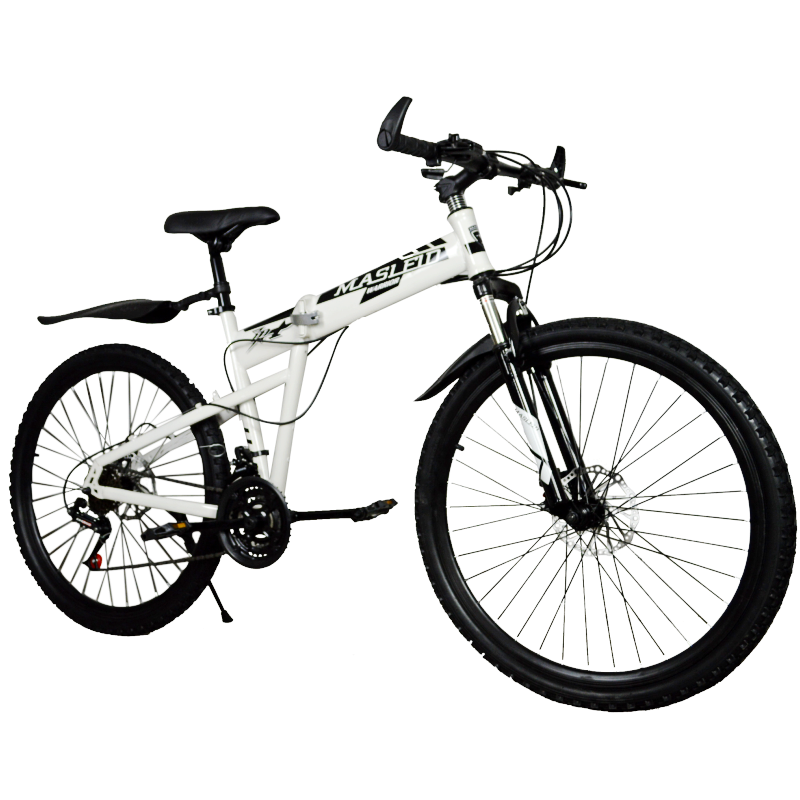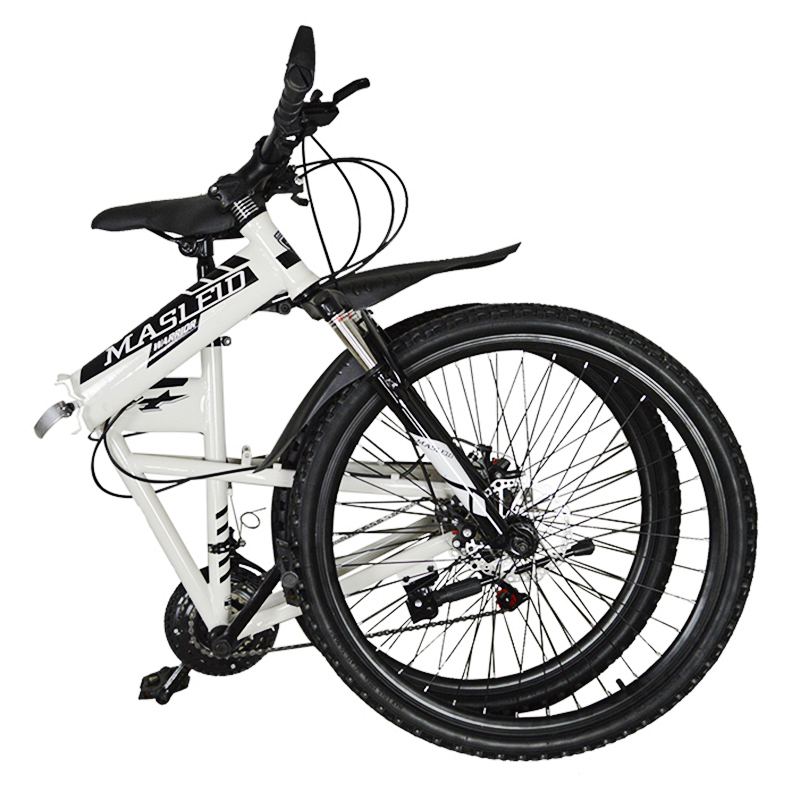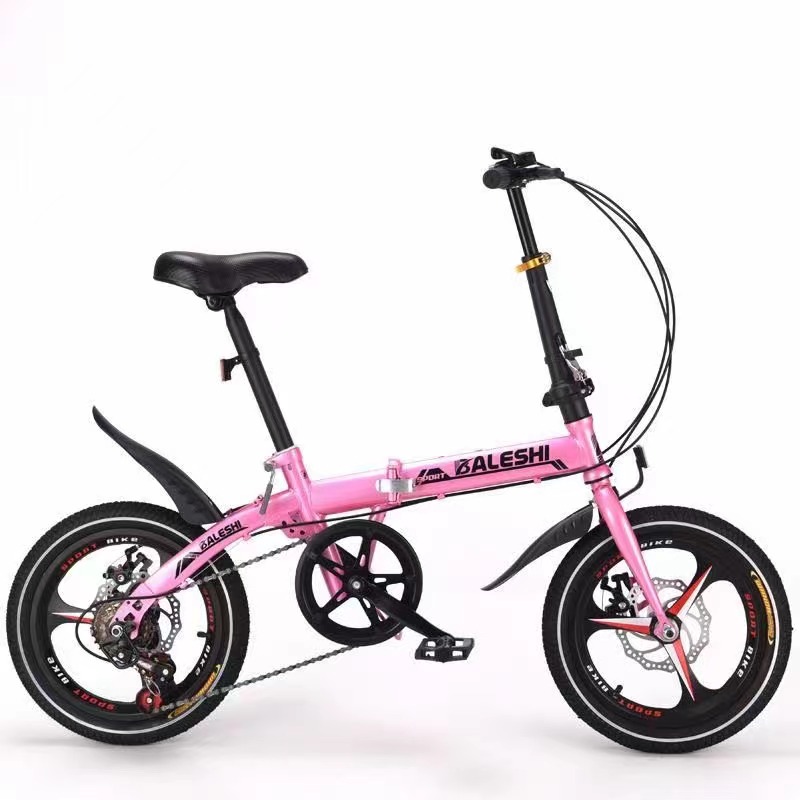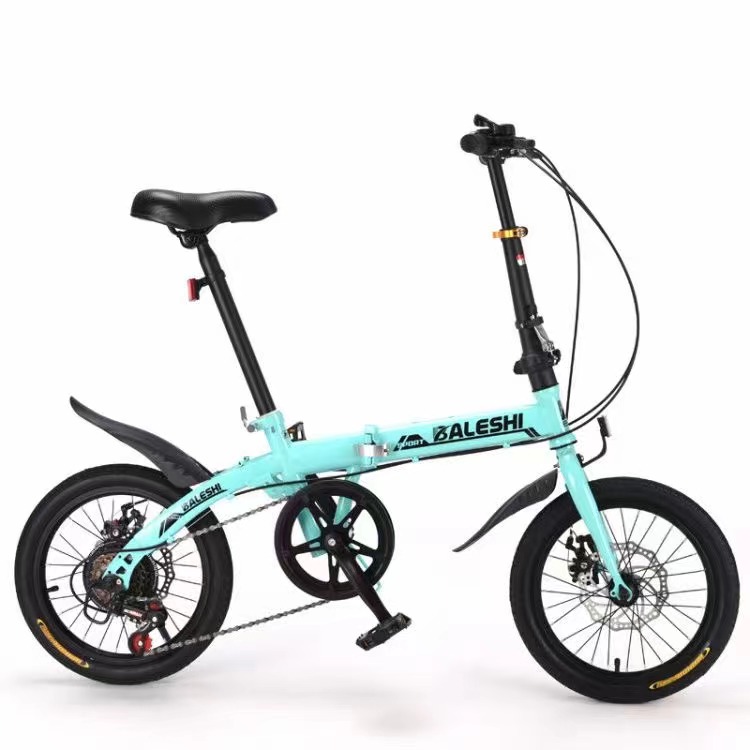26 inch folding speed mountain bike for men
| Frame | Rigid metal/alloy steel frame H/T:34*30*120mm T/T:50.8 |
| Fork | Steel/Alloy, absorber fork 26″* 25.4*22.2*152mm |
| H/Part | Steel/Alloy, foldable 22.2 L:580mm T:1.8mm H:30mm |
| Handlebar | Steel/Alloy handlebar |
| Stem | Steel/Alloy stem22.2*150mm T:1.4mm |
| Grip | PVC |
| Saddle | MTB saddle, SIZE:270*160mm |
| Seatpost | Quick release post,22.2*150mm T:1.4mm |
| Seat Clamper | Steel/Alloy, Q/R |
| Brake | F&R: ALLOY, DISC BRAKE |
| Brake Lever | BL-318, ALLOY/ALLOY |
| Cable | 2P |
| F/Hub | ALLOY, 3/8x72x110x14G -36H, FOR DISC/V BRAKE |
| R/Hub | ALLOY, 3/8x130x175x14G -36H, FOR DISC/V BRAKE |
| Spokes | 14GX45# |
| Rim | DOUBLE WALL, |
| Tire | 20X1.5” A/V |
| Crankset | Metal steel/alloy CRANK, 1/2*3/32*52T-170, SILVER GUARD |
| Bb Set | SEMI TRIDGE |
| R/Derailleur | SHIMANO, FOR 7/8/9 SPD |
How to maintain the tire of a bicycle?
Bicycle tyres have good wear resistance and bear large loads.
However, improper use will often accelerate wear, cracking, blasting and other phenomena.
Usually, the following points should be noted when using a bicycle:
① Inflate to the right amount.
The flat tire caused by insufficient inflation of the inner tube not only increases the resistance, but also increases the friction area between the tire and the ground, so that the outer tire accelerates wear and crack.
Inflatable too much, plus the sun in the tire air expansion, tire cord is easy to be broken, will shorten the service life.
Therefore, pump to the right amount, cold weather can be enough, less in summer;
Less air in the front wheels and more air in the rear wheels.
② Don’t overload.
The side of each tire is marked with its maximum loading weight.
If the maximum load of ordinary tire is 100 kg, the maximum load of weighted tire is 150 kg.
The weight of the bike and the bike itself is divided by the front and rear tyres.
The front wheels bear L /3 of the total weight and the rear wheels 2/3.
Almost all the load on the rear hanger is pressed on the rear tire, which is overloaded and increases the friction between the tire and the ground, especially because the rubber thickness on the side of the tire is much thinner than the tire crown (pattern), and often the tire is thin and prone to crack and burst at the tire shoulder.









